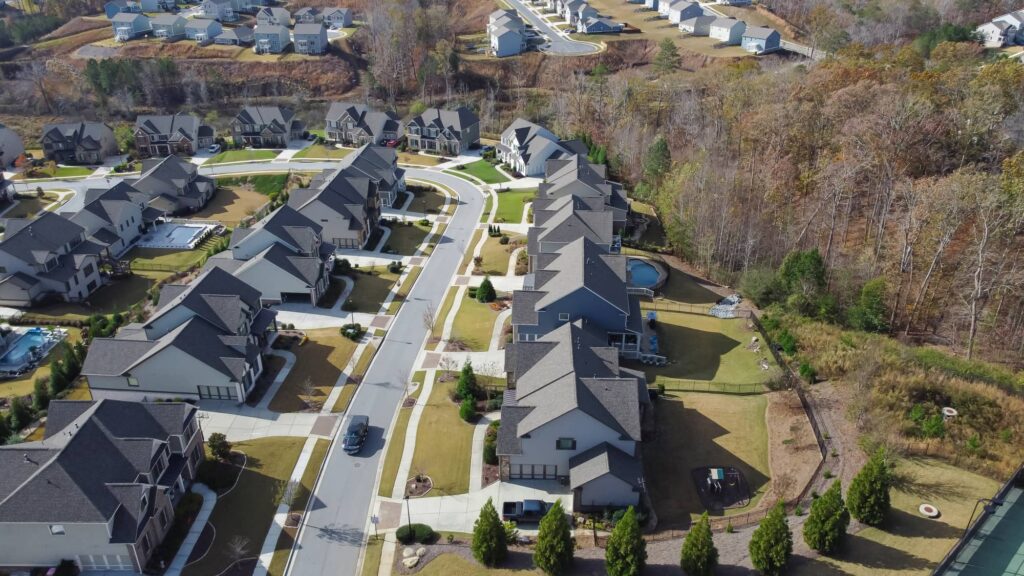
As a homeowners’ association (HOA) board member in San Jose and the greater Bay Area, you’ve got a lot on your plate—and keeping your community’s roads, parking lots, and sidewalks in good shape is one of the most critical responsibilities. When asphalt and concrete are maintained properly, they look great, last longer, and keep everyone safer. That’s why I’ve put together this straightforward guide to help you stay on top of your HOA maintenance tasks.
Cracks, potholes, and uneven surfaces aren’t just eyesores—they’re accidents waiting to happen. Whether it’s a resident tripping on an uneven sidewalk or a car bottoming out in a pothole, these issues can lead to costly liability claims. Addressing problems quickly keeps your community safe and reduces risk.
Nobody wants to live in a neighborhood where the roads are cracked and the sidewalks are stained. Well-maintained surfaces make your community more inviting and can even boost property values. When potential buyers visit, the first thing they notice is how well the community is cared for—and the condition of the pavement is a big part of that. HOA maintenance is key to ensuring your neighborhood stays attractive.
If you’ve ever put off a small repair and watched it turn into a big, expensive problem, you know why regular maintenance is so important. Fixing cracks and sealing surfaces regularly can prevent major damage and extend the lifespan of your asphalt and concrete. Trust me, a little proactive HOA maintenance goes a long way.
Take a walk around your community at least twice a year to check for issues like cracks, potholes, faded markings, and oil stains. Catch these problems early, and you’ll save yourself a lot of headaches.
Cracks are the gateway to bigger problems. When water gets into those cracks and freezes, it expands, making the damage worse. Sealing cracks early stops the issue in its tracks. Regular crack sealing is a cornerstone of effective HOA maintenance.
A single pothole can grow fast, especially with heavy traffic. Whether it’s a quick cold patch or a more durable hot mix repair, don’t delay in addressing these. Pothole repair should be a priority in any HOA maintenance plan.
If your asphalt is looking worn but the base is still solid, resurfacing can give it a new lease on life. This involves adding a fresh layer of asphalt on top of the existing surface.
Regular cleaning, like sweeping and pressure washing, keeps your concrete looking good and prevents stains from setting in. Clean surfaces are a basic yet essential part of HOA maintenance.
Use flexible sealants to fill cracks and joints. This prevents water from getting in and causing further damage.
If your concrete looks tired but is still structurally sound, resurfacing can make it look like new without the cost of replacement.
Roots lifting sidewalks is a common issue. Solutions include root pruning, installing barriers, or regrading the surface. Work with a professional to find the right fix. Proper management of tree root damage is often overlooked in HOA maintenance but is vital.
Standing water isn’t just an eyesore—it’s a problem that can erode concrete over time. Make sure your drainage systems are working properly.
Every HOA should have a detailed maintenance plan that outlines inspection schedules, routine maintenance tasks, and long-term projects like resurfacing.
Hire a contractor who specializes in HOA maintenance. They’ll understand your unique needs and help you get the most out of your budget.
Set aside money for both routine maintenance and unexpected repairs. A well-funded reserve can keep small problems from becoming financial emergencies.
Transparent communication about upcoming projects builds trust and cooperation. Let residents know when and why work is happening—and how it will benefit them. Open communication is an often underestimated part of effective HOA maintenance.
You can make maintenance more sustainable by using recycled materials, installing permeable pavements to reduce runoff, choosing low-VOC sealants, and using water-efficient cleaning methods.
When hiring a contractor, look for experience with a solid history of HOA work, references from other local HOAs, proper licenses and insurance, and comprehensive services. It’s often easier to work with a contractor who can handle everything from crack sealing to resurfacing.
Taking care of your HOA’s asphalt and concrete doesn’t have to be overwhelming. With a proactive approach, regular inspections, and help from experienced professionals, you can keep your community looking sharp and running smoothly for years to come.
When you need expert help with HOA maintenance in San Jose and the Bay Area, give Calvac Paving a call. We’ve been serving HOAs across the region for decades, and we’re here to help your community shine. Reach out today to learn more!